Bigger Brighter Better
A local musical documentary play
In December 1996 a new musical documentary play, Bigger Brighter Better, telling the story of Bletchley’s post-war pioneers, was performed. It was the end of a two year experience that started with 65 local people being interviewed about their experiences which gave much of the primary source material that inspired the play.
Stage 1 – The inspiration
In twenty years from 1946 Bletchley more than doubled in size. The seeds of expansion were actually sown from 1933 onwards with the foundation of the Bletchley Gazette a weekly newspaper whose motto was, ‘A Bigger, Brighter, Better Bletchley’. It was believed that an increase in the town’s population would give them much needed amenities, principally a grammar school ( the local grammar school for North Bucks was 10 miles up the railway track in Wolverton), a cinema and a Woolworths. With the post war demand for housing for bombed out Londoners, Bletchley Town Council was well-placed to realise its dream.
Stage 2 – The research
We began by recruiting a team of volunteers to carry out the research. A few had been involved in other Living Archive play research, but others were local Bletchley people who were interested in the project. Everyone was given training in oral history interviewing and recording, during the course of which we drew up a list of interview questions to which we added and subtracted questions as the project developed. We met approximately fortnightly in a volunteer’s home in Bletchley to discuss progress and decided who else should be interviewed. At the same time we scoured the Bletchley Gazette, looking at the early papers in 1933 but then concentrating on the period 1945 to 1974.
In all 65 people were interviewed including Bob Bunn, who came to Bletchley in the 1950’s because it offered the chance of a new house and a new start for himself and his wife. Bob’s story was one of those that the play focused on.
Stage 3 – Making the research accessible and usable
In preparation for writing the play script, detailed summaries were made of each of the tape recorded interviews; newspaper articles and other documents were transcribed or photocopied and photographs were copied.
Stage 4 – Transformation into an art form
a) Writing the play
The two co-devisers of the play, Rib Davis and Roger Kitchen, met to draw up a scene-by-scene plan of the play. This detailed what each scene would cover and the primary source materials that were available to tell that story.
It has been an important ‘rule’ of Living Archive documentaries that the words of the plays are all found in the primary sources. Incidents and dialogue are not invented, indeed we talk of ‘devising’ rather than ‘writing’ a play because the art is one of editing and organisation of existing material rather than creating original material. It would however be wrong to assume that there is no artifice. This is after all theatre and you concentrate in one place at one time on stage maybe a series of linked incidents that took place in various places at various times. You maybe take one person’s description and covert it into dialogue.
The first draft of the play was devised in a week. The two devisers locked themselves away, each with a computer. They met to discuss each scene and then went off with the file of primary source materials and each wrote alternate scenes. Music has been an important element of each of Living Archive’s plays. The songs can comment on the action you’ve seen, tell a story and move the action along and so on. Whilst not attempting to write songs, the two writers identified where songs were needed and listed the topics they would cover and identified a style of song (e.g. ‘Doris Day-type’) because they wanted the music to reflect the musical genre of the era the play was covering.
b) Pre-production
Rib Davis, co-deviser of the play was also its Director. He contacted Musical Director of the Living Archive Band, Neil Mercer and band members and composers Paul Clark and Kevin Adams and discussed the music that was needed. Each of the three undertook to write songs and they were each handed the primary source materials relating to their particular song. Talks were held with the designers about the way in which the play could be staged. Because the action moved from London to Bletchley, from a street to a factory, from a golf course to a house interior, it was impossible to have a conventional ‘set’, instead props played a bit part. There is a tradition in Living Archive plays of ambitious and ingenious props and this play was no exception. We created the town of Bletchley before and after the arrival of the newcomers, maggots that turned into flies and dancing washing machines.
In September an open invitation went out for people to get involved in all departments, particularly acting. Rehearsals took place alternately in a community centre hall and in a meeting room in the local police station!
Stage 5 – Giving it back to the community
a) The Play
The Sanctuary, normally a youth rave venue, was transformed for the very first time into a theatre. 1408 people saw the 8 performances and were extremely complimentary about the play. It was performed by a cast of 39 people of all ages and backgrounds and a band of 8 musicians, backed up by 72 costume and prop makers, backstage and front of house crew. Bob Bunn turned up to every performance, telling the audience at half-time and after final curtain that it was him who was being portrayed there on stage. Many others who had given their stories came to see themselves represented on stage, and for many it was a very moving experience.
b) The Book
Using the same primary source material that inspired the play, Marion Hill edited a book of photographs and memories called by the same name as the play and this was on sale during and after the play.


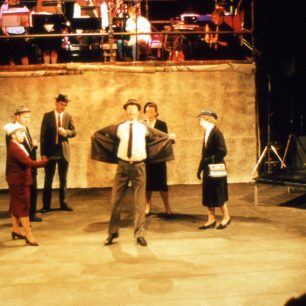
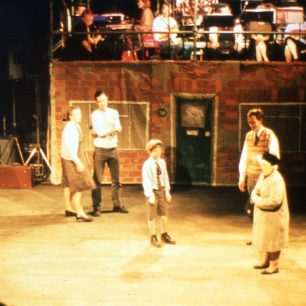
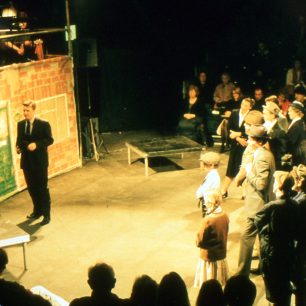
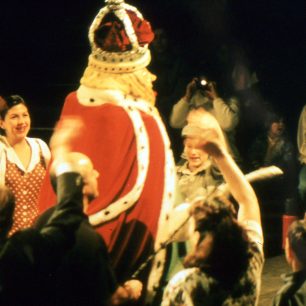

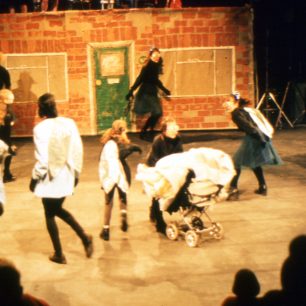
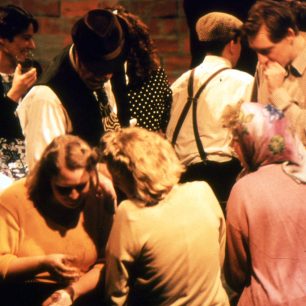




No Comments
Add a comment about this page